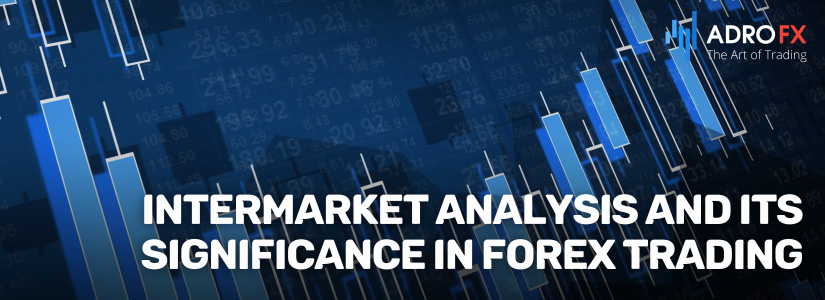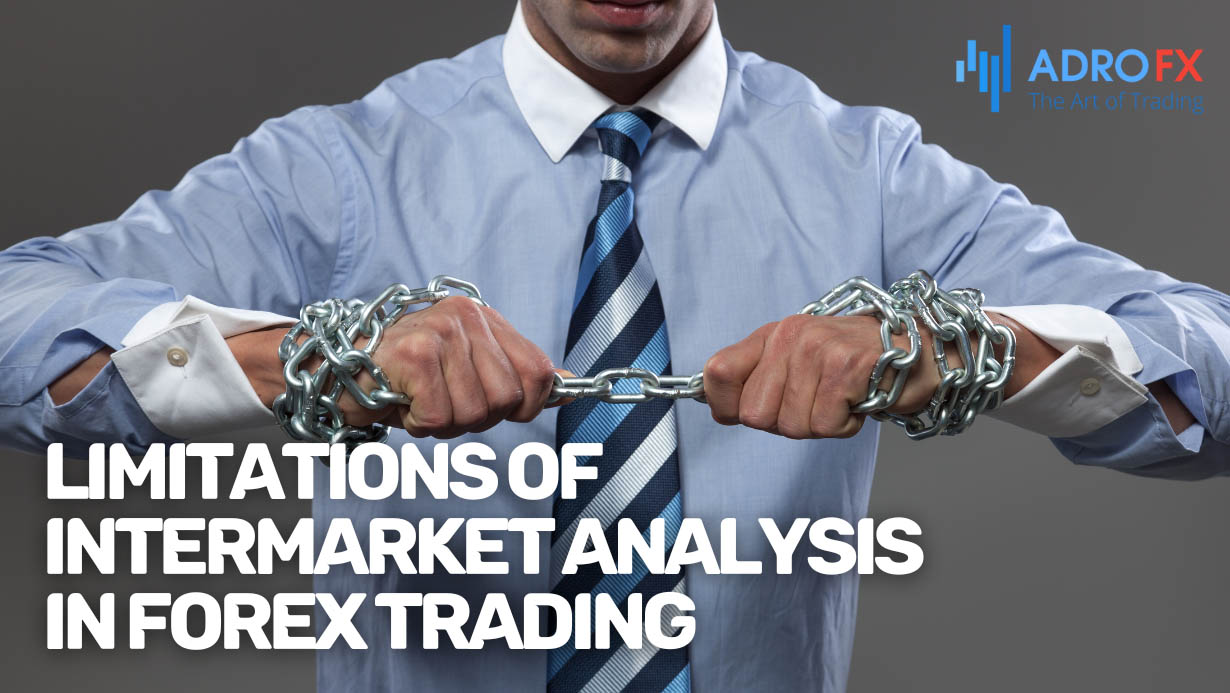Intermarket Analysis and Its Significance in Forex Trading

In the intricate realm of financial markets, where currencies, commodities, bonds, and equities intertwine, a strategic approach known as intermarket analysis takes center stage. This methodology delves into the complex relationships and interdependencies among different asset classes, providing traders with a holistic lens to decipher potential trading opportunities and overarching market trends.
At its core, intermarket analysis operates on the fundamental premise that financial markets are interconnected; changes in one market can resonate across others. Traders adopting this strategic approach meticulously examine patterns, correlations, and divergences within these market relationships to make well-informed decisions. In this exploration, we unravel the key principles and benefits of intermarket analysis, shedding light on its significance in navigating the dynamic landscape of global financial instruments.
Understanding Market Interconnections
Intermarket analysis is a strategic approach that delves into the intricate relationships and interdependencies among different financial markets. This methodology seeks to gain valuable insights into potential trading opportunities and overall market trends by scrutinizing the connections between diverse asset classes such as currencies, commodities, bonds, and equities.
At its core, intermarket analysis operates on the fundamental premise that financial markets are intertwined; changes in one market can reverberate and influence others. Traders employing this strategy meticulously examine patterns, correlations, and divergences within these market relationships to make informed decisions.

Key Principles of Intermarket Analysis
- Intermarket Relationships
The primary objective of intermarket analysis is to identify correlations and divergences between various markets. For instance, fluctuations in commodity prices may impact the currencies of countries heavily involved in commodity trading. Similarly, changes in bond yields can have repercussions on currency valuations. - Leading and Lagging Indicators
Certain markets can serve as leading or lagging indicators for others. An illustrative example is the relationship between equity market trends and currency values. By closely monitoring these leading and lagging indicators, traders gain the ability to anticipate potential movements in the forex market. - Risk Sentiment
The intermarket analysis takes into account the broader market sentiment, including periods characterized by risk-on or risk-off environments. During risk-on phases, investors typically gravitate towards higher-yielding and riskier assets, consequently impacting currency valuations.
In essence, intermarket analysis provides traders with a holistic perspective, allowing them to navigate the complex web of financial markets and make well-informed decisions based on the interconnected nature of global financial instruments.
Benefits of Intermarket Analysis in Forex Trading
Intermarket analysis proves to be an invaluable asset in the forex trader's arsenal, offering a comprehensive approach to comprehending and navigating the ever-changing currency markets. Integrating intermarket analysis into your forex trading strategy yields a range of benefits:
- Holistic Market Insight
Intermarket analysis provides a panoramic view of the financial landscape by considering the interconnectedness of various markets, including currencies, commodities, bonds, and equities. This broader perspective enhances your understanding of global market dynamics. - Identifying Correlations and Divergences
Traders can uncover valuable insights by identifying correlations and divergences between different markets. For example, understanding how changes in commodity prices might influence currency values allows for more informed trading decisions. - Leading and Lagging Indicators
Leveraging leading and lagging indicators helps traders anticipate potential movements in the forex market. Recognizing which markets tend to precede or follow certain trends allows for a proactive approach to trading. - Risk Management
Intermarket analysis considers overall market sentiment, including risk-on and risk-off environments. This insight into broader market sentiment aids in effective risk management, especially during periods of heightened volatility. - Improved Decision-Making
By analyzing relationships between different asset classes, traders can make more informed and well-rounded decisions. This strategic approach goes beyond isolated forex analysis, offering a more comprehensive understanding of the factors influencing currency valuations. - Adaptability to Market Changes
The interconnected nature of financial markets means that changes in one market can have ripple effects. Intermarket analysis equips traders with the ability to adapt to evolving market conditions and adjust their strategies accordingly. - Enhanced Forecasting Abilities
Traders employing intermarket analysis gain enhanced forecasting abilities. Understanding how shifts in one market may impact another allows for more accurate predictions and a proactive stance in response to potential market movements.
Incorporating intermarket analysis into your forex trading strategy empowers you with a broader perspective, improved risk management capabilities, and a nuanced understanding of the intricate relationships shaping global financial markets. By unlocking these benefits, traders can navigate the complexities of forex trading with increased confidence and precision.

Limitations of Intermarket Analysis in Forex Trading
While intermarket analysis offers valuable insights, forex traders must be aware of the challenges and limitations associated with this approach. Understanding these aspects is essential for a well-rounded and informed trading strategy:
- Complexity in Interpretation
Intermarket analysis involves intricate relationships between various asset classes, interpreting interconnected signals complex. Traders may find it challenging to decipher the interplay of factors and determine the dominant influences on currency movements.
- Dynamic Market Conditions
The forex market is dynamic, with conditions changing rapidly. Intermarket relationships may shift or break down during certain market phases, leading to unreliable correlations. Adapting to these dynamic changes requires constant vigilance and adjustment of trading strategies.
- Over-Optimization Risks
Traders employing intermarket analysis may face the risk of over-optimization, where strategies are excessively fine-tuned based on historical data. While backtesting is valuable, relying too heavily on past performance may result in suboptimal decision-making in real-time markets.
- Limited Predictive Power
Intermarket analysis provides insights into correlations and potential influences but does not guarantee predictive power. Market conditions can be influenced by unforeseen events, rendering historical correlations less reliable in predicting future price movements.
- Data Lag Issues
Data lag can pose challenges in intermarket analysis as not all markets react simultaneously to certain events. Traders need to account for delays in data dissemination and execution, which can impact the accuracy of their decision-making process.
- Intermarket Relationships Are Not Static
Intermarket relationships evolve over time, and assumptions about correlations may no longer hold true. This lack of static relationships requires traders to regularly reassess and update their understanding of intermarket dynamics.
- Subjectivity in Analysis
The intermarket analysis involves a degree of subjectivity in interpreting relationships between markets. Traders may vary in their assessments of correlations, leading to potential disparities in trading strategies based on individual interpretations.
- Dependency on External Factors
Intermarket analysis heavily relies on external factors such as geopolitical events, economic indicators, and global trends. Unforeseen developments in these external factors can introduce uncertainties and challenge the reliability of intermarket signals.
- Technical Skill Requirements
Effectively implementing intermarket analysis demands a certain level of technical expertise. Traders need a solid understanding of the interconnected relationships and the ability to interpret complex data sets, which may pose a barrier for those lacking technical skills.
In conclusion, while intermarket analysis is a valuable tool, traders should approach it with a nuanced understanding of its challenges and limitations. Integrating this approach into a broader trading strategy, complemented by risk management measures, can enhance decision-making in the dynamic landscape of forex trading.

Intermarket Analysis Correlations
Intermarket analysis delves into the intricate correlations between different financial markets, unveiling interconnected relationships that influence currency movements in the forex market. Understanding these correlations is pivotal for traders seeking comprehensive insights into global market dynamics. Here are key intermarket relationships to consider:
- Currency and Commodity Prices
Correlations exist between currency values and commodity prices. For instance, currencies of commodity-exporting nations, like the Australian Dollar and the Canadian Dollar, often move in tandem with commodity prices, particularly those of metals and energy.
- Bonds and Currency Values
Changes in bond yields can impact currency valuations. Higher bond yields in a particular country may attract foreign capital, strengthening the currency. Conversely, lower yields might lead to currency depreciation.
- Equities and Currency Movements
Equity market trends can influence currency values. A strong equity market may signal economic confidence, strengthening the associated currency. Conversely, a bearish equity market might lead to a weaker currency.
- Interest Rates and Currency Strength
Interest rates play a crucial role in currency strength. Currencies of countries with higher interest rates often attract investors seeking better returns, leading to appreciation.
- Risk-On and Risk-Off Sentiment
Market sentiment, categorized as risk-on or risk-off, affects currency movements. In risk-on environments, investors may favor higher-yielding and riskier currencies, while risk-off periods may see a shift to safe-haven currencies.
- Inverse Relationship with the US Dollar
The US Dollar often exhibits an inverse relationship with commodities. When the USD strengthens, commodity prices may decline, impacting currencies tied to commodities.
- Economic Indicators and Currency Values
Various economic indicators, such as GDP growth, employment data, and manufacturing indices, can influence currency values. Strong economic data may boost a currency, while weak indicators can lead to depreciation.
- Global Events and Safe-Haven Currencies
Geopolitical events and global uncertainties can drive investors toward safe-haven currencies like the US Dollar, Japanese Yen, or Swiss Franc during turbulent times.
- Trade Balances and Currency Appreciation
Countries with trade surpluses often experience currency appreciation, while those with deficits may see depreciation. Trade balance data is crucial for understanding currency movements.
- Central Bank Policies
Central bank policies, including interest rate decisions and monetary policy statements, play a significant role in currency movements. Divergent policies among central banks can lead to shifts in currency values.
Incorporating a nuanced understanding of these intermarket correlations allows traders to make more informed decisions in the complex and interconnected world of forex trading. Regular monitoring and adaptation to evolving relationships contribute to a comprehensive trading strategy.
Conclusion
As we conclude our journey into the world of intermarket analysis, its pivotal role in the forex trader's toolkit becomes apparent. This strategic approach, rooted in the interconnected nature of financial markets, offers a comprehensive understanding of global dynamics, enabling traders to make nuanced and well-informed decisions.
The benefits of intermarket analysis extend beyond mere correlation recognition, encompassing early trend identification, risk management insights, and adaptability to changing market conditions. Traders armed with the principles of intermarket analysis gain a broader perspective, confidently navigating the complexities of forex trading.
However, it's crucial to acknowledge the limitations and challenges associated with this approach. From complexities in interpretation to dynamic market conditions and the risk of over-optimization, traders must tread carefully. A balanced and informed approach, complemented by continuous monitoring and adaptation, ensures that intermarket analysis remains a valuable asset in the ever-evolving landscape of forex trading. In essence, understanding and leveraging the intricate relationships between different markets empower traders to thrive in the dynamic and interconnected world of forex.
About AdroFx
Established in 2018, AdroFx is known for its high technology and its ability to deliver high-quality brokerage services in more than 200 countries around the world. AdroFx makes every effort to keep its customers satisfied and to meet all the trading needs of any trader. With the five types of trading accounts, we have all it takes to fit any traders` needs and styles. The company provides access to 115+ trading instruments, including currencies, metals, stocks, and cryptocurrencies, which make it possible to make the most out of trading on the financial markets. Considering all the above, AdroFx is the perfect variant for anyone who doesn't settle for less than the best.










